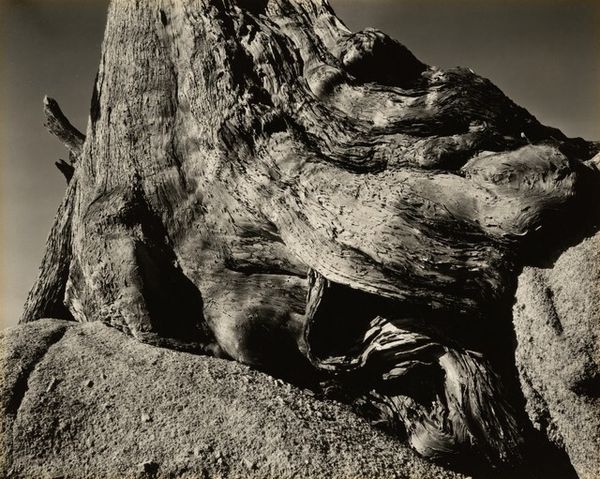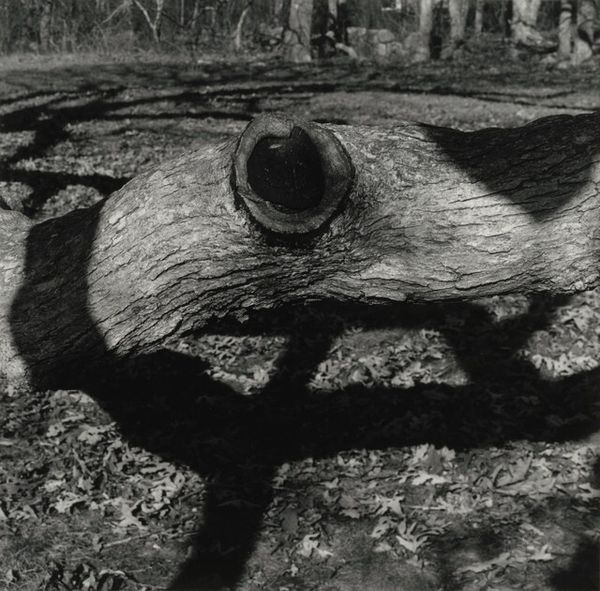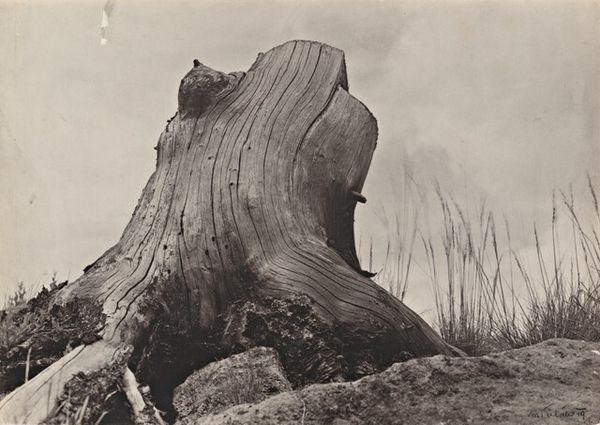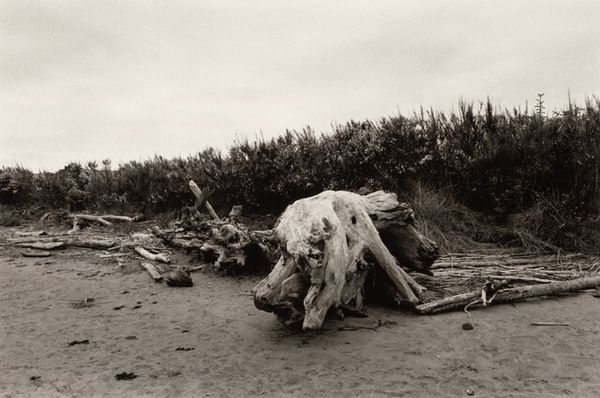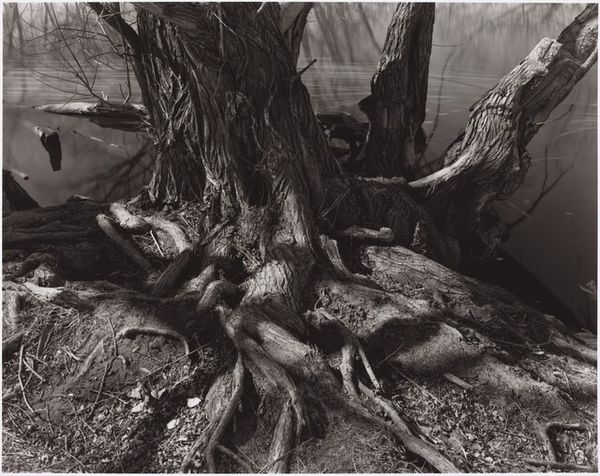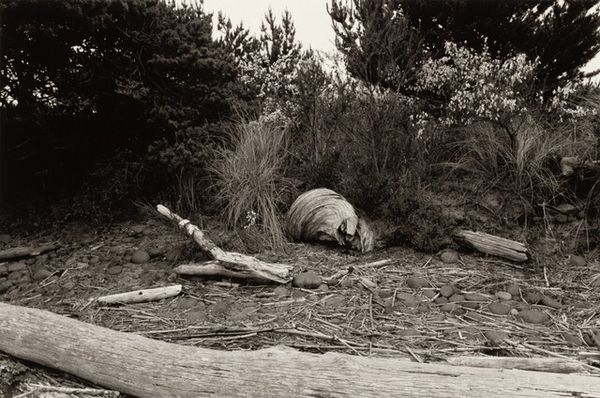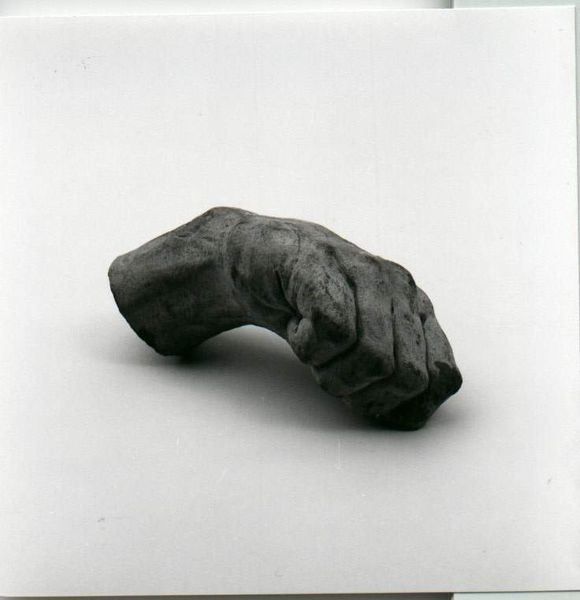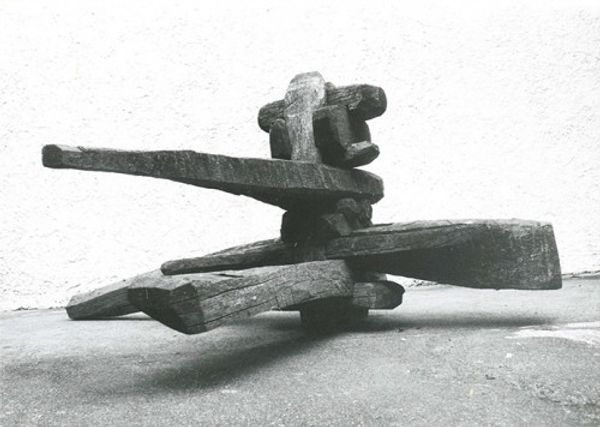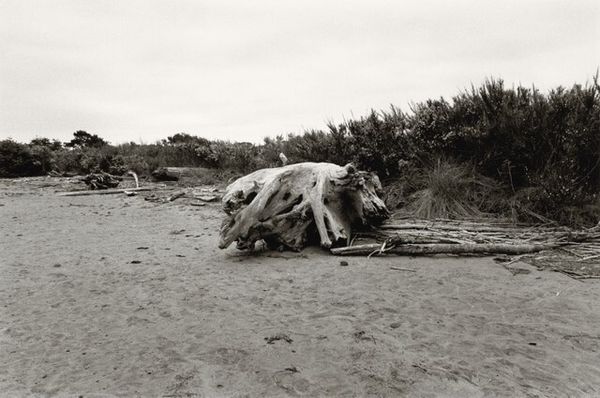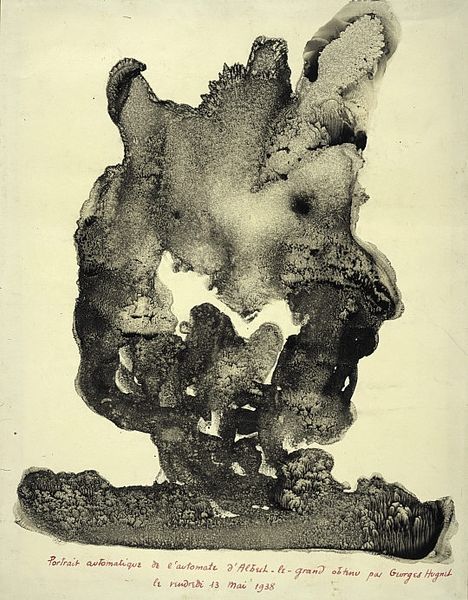
photography
#
still-life-photography
#
landscape
#
photography
#
monochrome photography
#
monochrome
#
realism
#
monochrome
Dimensions: image: 19.8 × 30 cm (7 13/16 × 11 13/16 in.) sheet: 27.8 × 35.5 cm (10 15/16 × 14 in.)
Copyright: National Gallery of Art: CC0 1.0
Curator: Robert Adams created "The River's Edge" in 2015, a monochrome photograph capturing a beached log. What are your initial thoughts? Editor: It feels ancient, monumental, and yet...vulnerable. Like a giant creature washed ashore, offering its textured body for quiet contemplation. The black and white tones lend a sense of timelessness, don’t you think? Curator: Indeed. Adams is known for his landscapes reflecting environmental concerns and the impact of human activity on the natural world. Presenting the scene in monochrome amplifies that stark, unromantic view of nature altered. Editor: There’s something about the realism here too. He doesn’t try to prettify the scene; the textures are raw, the lines unflinching. What do you make of the composition? Curator: The centered placement of the log, almost filling the frame, emphasizes its scale and presence. The surrounding landscape, though minimal, contextualizes it within a wider environment, maybe alluding to broader ecological narratives. Editor: It feels so personal, as though the log carries a story—its rings whispering tales of storms, slow growth, and ultimately, displacement. One wonders what the history of logging practices might have been in this area... Curator: That's a great point. Understanding Adams's context reveals that he indeed frequently critiqued such histories within American landscape photography. He aimed to present nature as simultaneously beautiful and compromised by human intervention. Editor: Looking at the gnarled textures and the overall composition I get a melancholic, almost elegiac vibe. I appreciate the visual honesty here. It’s a piece that really stays with you, making you ponder the passage of time and our relationship with the natural world. Curator: Absolutely. “The River’s Edge” reminds us that art serves to bear witness, challenge perspectives, and preserve records about our changing world. Thank you for your valuable observations. Editor: Thanks to you! Art becomes truly exciting when we connect personal reflections with cultural awareness, as you so expertly demonstrated.
Comments
No comments
Be the first to comment and join the conversation on the ultimate creative platform.
